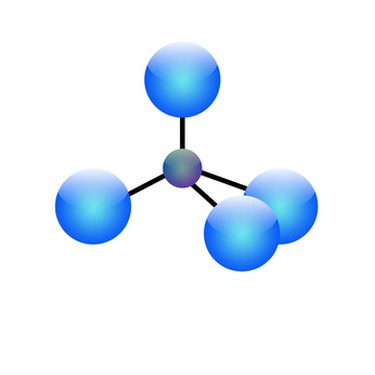Things You'll Need
87 small Styrofoam craft balls
4 colors of paint or permanent marker
Toothpicks
Wooden skewers 12 to 14 inches long
Sheet of Styrofoam

The construction of three-dimensional models is a common learning tool in chemistry classes. The models are used to give the children a deeper understanding of how things work. The structure of an atom is made up of three main parts--protons, neutrons and electrons--and each element has varying numbers of these components. Building a three-dimensional model of a nickel atom will show children how protons and neutrons make up the nucleus and how the electrons orbit around the central mass.
Step 1
Push a toothpick into each styrofoam ball; this will act as a handle to make painting or coloring far easier.
Video of the Day
Step 2
Separate your 87 Styrofoam balls into two piles of 28 and one pile of 31. Paint each of the three piles with a different color. Use a marker or paint to mark one pile of 28 with plus symbols, representing protons. Mark the other pile of 28 with minus symbols, representing electrons. Leave the final 31 balls blank to represent neutrons. Use the sheet of Styrofoam as a drying rack by pushing the exposed ends of the toothpicks holding the balls into it. Allow to dry.
Step 3
Build the nucleus with the 28 balls marked with a plus and the 31 unmarked balls. Create a clump held together with toothpicks. You may need to shorten some of the toothpicks to get a tight cluster.
Step 4
Thread the remaining 28 balls onto six wooden skewers. You should get five on four of them, and four on the remaining two. Make sure one ball is on the tip of each skewer to help the model's stability. Now press the exposed ends of each skewer into the nucleus, spacing them apart around your central cluster.
Video of the Day